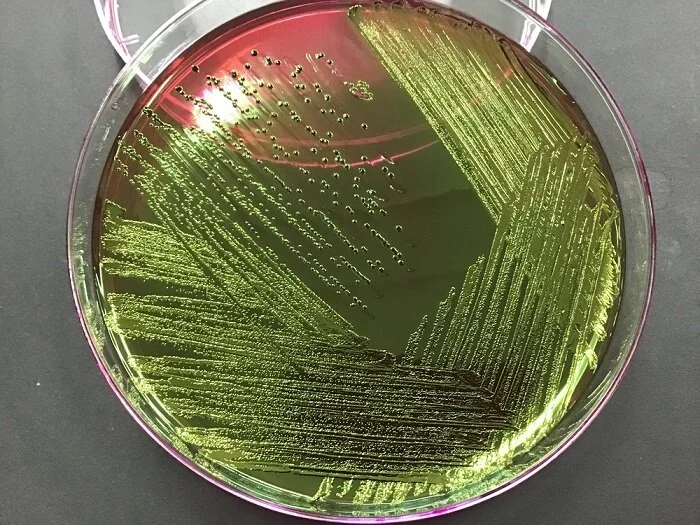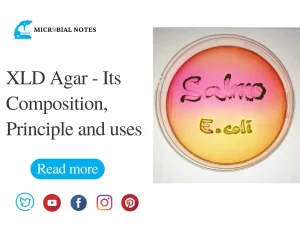Introduction
EMB agar, also known as Eosin Methylene Blue agar, is a specialized microbiological medium that plays a crucial role in the isolation and differentiation of gram-negative bacteria. Its unique composition and properties make it a valuable tool in the field of microbiology. In this article, we will delve into the various aspects of EMB agar, including its invention, composition, physical and chemical properties, microbiological characteristics, applications, and safety precautions.
What is EMB agar?
EMB agar is a solid growth medium used in the laboratory for the cultivation and identification of gram-negative bacteria. It contains specific ingredients that facilitate the growth of these bacteria while inhibiting the growth of gram-positive Bacteria. The distinguishing feature of EMB agar lies in its ability to differentiate between different types of gram-negative bacteria based on their metabolic characteristics.
History of EMB Agar
EMB agar, invented in 1923 by Holt-Harris and Teague, has a rich history in the field of microbiology. This groundbreaking medium revolutionized the study of gram-negative bacteria by providing a reliable tool for their isolation and identification. Originally, EMB agar found its primary application in the identification of fecal coliforms in water samples. By differentiating between lactose-fermenting and non-lactose-fermenting bacteria, it became an invaluable tool for assessing water quality and detecting potentially harmful microorganisms.
Principle
The principle of EMB (Eosin Methylene Blue) agar is founded on its dual functionality as a selective and differential medium, enabling the isolation and differentiation of gram-negative bacteria based on their ability to ferment lactose and produce acid byproducts. This unique formulation allows for the identification and characterization of specific bacterial species within the Enterobacteriaceae family. The key principles of EMB agar are as follows:
- Selectivity: EMB agar possesses inherent selectivity towards gram-negative bacteria. This selectivity is achieved through the incorporation of selective agents, such as eosin Y and methylene blue, which inhibit the growth of gram-positive bacteria. By specifically targeting gram-negative organisms, EMB agar provides an enriched environment conducive to their growth.
- Lactose Fermentation: EMB agar serves as a differential medium, facilitating the differentiation of bacteria based on their ability to ferment lactose. Lactose-fermenting bacteria possess the necessary enzymes to break down lactose into simpler compounds. As these bacteria metabolize lactose, they produce organic acids, lowering the pH of the surrounding medium.
- Acid Detection: The acid byproducts resulting from lactose fermentation play a pivotal role in the differentiation process. Eosin Y and methylene blue, incorporated as pH indicator dyes within EMB agar, respond to the acidic conditions generated by lactose fermentation. Depending on the degree of acid production, these dyes undergo distinctive color changes.
- Color Differentiation: The indicator dyes interact with the acidic environment, resulting in varying coloration patterns within the agar. Lactose-fermenting bacteria that produce copious amounts of acid typically exhibit colonies with a pink to purple hue. Notably, Escherichia coli, a prominent member of the Enterobacteriaceae family, can exhibit a unique metallic green sheen due to its robust acid production and metachromatic properties of dyes.
- Non-Lactose Fermentation: Non-lactose-fermenting bacteria, incapable of metabolizing lactose, do not produce significant amounts of acid. Consequently, they appear as colorless or pale colonies on EMB agar, enabling their differentiation from lactose-fermenting counterparts.
Composition of EMB Agar
EMB agar consists of several key ingredients, each playing a vital role in its selective and differential properties. These ingredients include peptone, lactose, eosin Y, methylene blue, and agar.
Peptone: It serves as a source of nitrogen and essential nutrients for bacterial growth, promoting the proliferation of gram-negative organisms.
Lactose: Lactose acts as a fermentable carbohydrate, providing a substrate for bacterial metabolism and facilitating the differentiation of lactose-fermenting bacteria.
Eosin Y: This dye is incorporated into the agar to inhibit the growth of gram-positive bacteria, thereby selectively promoting the growth of gram-negative organisms.
Methylene Blue: Methylene blue serves a similar purpose to eosin Y by inhibiting the growth of gram-positive bacteria. It also aids in the differentiation of bacterial species based on their metabolic characteristics.
Agar: Agar, derived from seaweed, acts as a solidifying agent, giving structure to the medium and allowing bacteria to grow as individual colonies.
| Ingredient | Amount (g) |
| Agar | 13.5 |
| Pancreatic digest of casein | 10.0 |
| Lactose | 5.0 |
| Sucrose | 5.0 |
| K2HPO4 | 2.0 |
| Eosin Y | 0.4 |
| Methylene Blue | 0.065 |
Appearance of EMB agar
EMB agar typically appears as a transparent to slightly hazy, reddish-purple gel when properly prepared. The incorporation of eosin Y and methylene blue dyes imparts a distinctive color to the medium, facilitating the differentiation of bacterial colonies based on their metabolic characteristics.

Procedure:
- Weigh 36 grams of EMB agar. The specific quantities may vary based on the manufacturer’s instructions or the laboratory’s preferred formulation.
- Dissolve the media in distilled water while gently stirring to ensure proper mixing. This mixture forms the base of the EMB agar.
- Heat the mixture on a Bunsen burner or other heat source, ensuring complete dissolution of the ingredients.
- Adjust the pH of the medium to the desired range using an appropriate pH indicator or pH meter. The recommended pH for EMB agar typically falls between 6.9 and 7.3.
- Once the desired pH is achieved, Sterilize the prepared EMB agar plates using an autoclave. At 121 C for 15 minutes
- Once the autoclaving process is complete, remove the EMB agar flask from the autoclave and allow them to cool to room temperature before using or storing them in a suitable environment.
- Carefully dispense the liquid EMB agar into sterile Petri dishes using sterile pipettes or by employing aseptic pouring techniques.
- Allow the agar to solidify at room temperature or place the plates in a refrigerator for faster solidification.
- After solidification, cover the petri dishes with their respective lids and invert them to prevent condensation from dripping onto the agar surface.
Results
| Bacteria | Colony Characteristics |
| Escherichia coli | Dark purple or black with a metallic green sheen |
| Enterobacter aerogenes | Pink colonies without metallic sheen |
| Klebsiella pneumoniae | Mucoid colonies in Pink Color |
| Proteus vulgaris | Colorless or pale |
| Salmonella spp. | Colorless or pale |
| Shigella spp. | Colorless or pale |
Applications of EMB Agar
EMB agar finds widespread use in various applications within the field of microbiology. It is commonly employed for the isolation and differentiation of gram-negative bacteria, particularly those of the Enterobacteriaceae family. Additionally, EMB agar is utilized for the detection and enumeration of fecal coliforms in water and food samples, aiding in the assessment of water quality and the monitoring of food safety.
What are the advantages of using EMB agar?
The use of EMB agar offers several advantages in microbiological studies. Its selective and differential properties allow for the isolation and identification of gram-negative bacteria, aiding in the characterization of microbial populations. The incorporation of lactose and dyes enables the differentiation of lactose-fermenting and non-lactose-fermenting organisms, providing valuable insights into their metabolic capabilities. Moreover, EMB agar is relatively easy to prepare and widely available, making it a convenient choice for many laboratories.
What are the limitations of using EMB agar?
While EMB agar is a valuable tool in microbiology, it does have some limitations. Its selectivity against gram-positive bacteria restricts its use for the cultivation of such organisms. Additionally, the interpretation of results obtained from EMB agar requires careful observation and expertise to differentiate between various types of bacterial growth and accurately interpret the color changes in the medium.
Conclusion
In conclusion, EMB agar is a valuable tool in microbiology, aiding in the isolation, differentiation, and identification of gram-negative bacteria. Its selective and differential properties, along with its relatively simple preparation, make it an essential medium in laboratories worldwide. Understanding the composition, physical and chemical properties, microbiological characteristics, applications, and safety precautions associated with EMB agar provides a solid foundation for further exploration and utilization of this versatile medium in microbiological research and diagnostic settings.
References
Atlas, R. M. (2010). Handbook of Microbiological Media. CRC Press.
https://en.wikipedia.org/wiki/Eosin_methylene_blue
http://himedialabs.com/TD/M317.pdf



